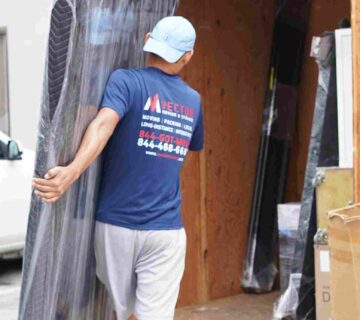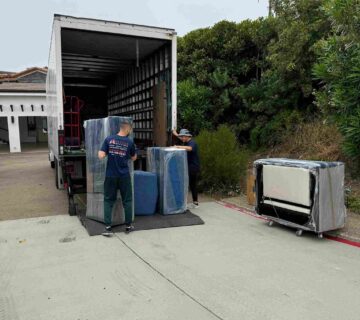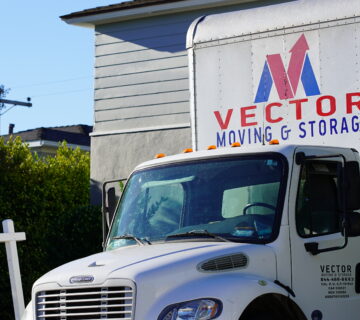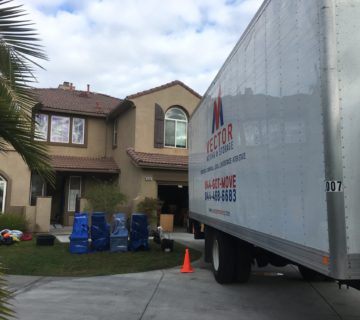The Truth About What Happens When Movers Damage Your Stuff
Moving can be an exciting yet stressful experience. Whether you’re relocating across town or across the country, the last thing you want is to find your belongings damaged after a move. At Vector Moving and Storage San Diego, we understand the importance of safeguarding your possessions during the moving process. In this article, we’ll explore what happens when movers damage your items, how to handle the situation, and what you can do to protect yourself.
Understanding the Risks of Moving
When you hire a moving company, you trust them with your valuable possessions. However, accidents can happen. Heavy furniture can slip, fragile items can break, and boxes can get crushed. While reputable movers take precautions to minimize risks, it’s essential to understand that damages can still occur.
Common Causes of Damage
1. **Improper Packing**: If items are not packed correctly, they are more susceptible to damage during transit. Movers may not be responsible for damages caused by inadequate packing.
2. **Inexperienced Movers**: Not all moving companies have the same level of expertise. Less experienced movers may mishandle items or lack the proper equipment to transport them safely.
3. **Transportation Issues**: Bumpy roads and sudden stops can lead to shifting and damage. Even the best movers can’t control external factors like road conditions.
4. **Overloading**: Trying to fit too many items in one truck or box can lead to accidents and damages.
What Happens When Damage Occurs?
When your belongings are damaged during a move, several steps typically follow:
1. Initial Assessment
If you discover damage after your move, the first step is to assess the situation. Take photographs of the damaged items and document any visible issues. This evidence will be crucial for filing a claim.
2. Reporting the Damage
Most reputable moving companies, including Vector Moving and Storage San Diego, have procedures in place for reporting damages. Contact your moving company as soon as possible to report the issue. Provide them with details about the damage and any evidence you’ve collected.
3. Review Your Contract
Your moving contract should outline the company’s liability for damages. There are typically two types of liability:
– **Released Value Protection**: This basic coverage is often included in your moving quote. It offers minimal protection, usually at a rate of $0.60 per pound per item. If an item valued at $100 is damaged and weighs 50 pounds, you would only receive $30.
– **Full Value Protection**: This option provides more comprehensive coverage. If an item is lost or damaged, the moving company must repair it, replace it, or reimburse you for its current market value.
Understanding your coverage is crucial when dealing with damages.
4. Filing a Claim
If you have Full Value Protection or if your moving company accepts responsibility for the damages, you’ll need to file a claim. This process typically involves filling out a claim form and providing documentation of the damage. Be prepared for a potentially lengthy process as claims are reviewed and processed.
5. Resolution
Once your claim is submitted, the moving company will investigate and determine whether they are liable for the damages. If they accept responsibility, they will either repair or replace your items or provide compensation based on their policy.
How to Protect Yourself from Damages
While accidents can happen, there are steps you can take to minimize risks and protect yourself:
1. Choose a Reputable Moving Company
Do your research before hiring a moving company. Read reviews, check ratings on platforms like Yelp and Google, and ask for recommendations from friends or family. A reputable company like Vector Moving and Storage San Diego will have a solid track record of customer satisfaction.
2. Understand Your Coverage Options
Before signing a contract, make sure you understand your coverage options. Decide whether you want Released Value P
rotection or Full Value Protection based on your needs and the value of your belongings.
3. Pack Wisely
If you’re packing your items yourself, take the time to do it right. Use quality packing materials, such as sturdy boxes, bubble wrap, and packing tape. Label boxes clearly and indicate which items are fragile.
4. Create an Inventory List
Before your move, create an inventory list of all your belongings. This list will serve as a reference point if any items go missing or are damaged during transit.
5. Supervise the Move
If possible, be present during the move. Supervise the loading and unloading process to ensure that your items are handled carefully.
6. Communicate with Your Movers
Clear communication with your movers is essential. Let them know about any fragile items or special handling instructions for specific belongings.
What to Do After Damage Occurs
If you find that some of your items were damaged during the move despite taking precautions, here’s what you should do:
1. **Document Everything**: Take photos of all damaged items from multiple angles and write down descriptions of each piece.
2. **Contact Your Moving Company**: Report the damage immediately and provide them with all necessary documentation.
3. **Stay Organized**: Keep copies of all correspondence with the moving company regarding your claim.
4. **Follow Up**: If you don’t receive a response within a reasonable time frame, follow up to ensure your claim is being processed.
5. **Seek Legal Advice if Necessary**: If you encounter difficulties in resolving your claim, consider seeking legal advice to understand your rights and options.
Conclusion
While moving can be fraught with challenges, understanding what happens when damages occur—and how to handle them—can make the process smoother. At Vector Moving and Storage San Diego, we pride ourselves on our commitment to customer satisfaction and strive to handle your belongings with care. However, if an accident does happen, knowing how to respond can help ease the stress of dealing with damaged items.
By choosing a reputable mover, understanding your coverage options, and taking proactive steps to protect your belongings, you can minimize the risks associated with moving. Remember that communication is key—both with your movers and in documenting any issues that arise during the process.
With careful planning and awareness, you can enjoy a successful move without worrying about what might happen if things go wrong. Trust Vector Moving and Storage San Diego to provide you with reliable service every step of the way!






No comment